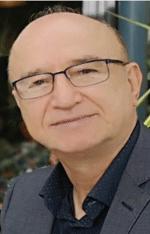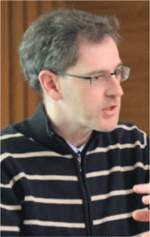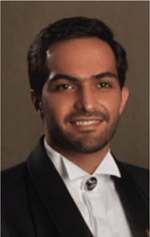Elastic waves in porous media saturated with non-wetting fluid
Jimmy X. Li A D , Reza Rezaee A , Tobias M. Müller B C and Mohammad Sarmadivaleh AA Western Australian School of Mines, Curtin University, 26 Dick Perry Avenue, Kensington, WA 6151, Australia.
B Department of Seismology, Centro de Investigación Científica y de Educación Superior de Ensenada, 22860 Ensenada, BC, Mexico.
C School of Earth Sciences and Engineering, Hohai University, Nanjing 211100, China.
D Corresponding author. Email: jimmy.li@postgrad.curtin.edu.au
The APPEA Journal 60(1) 315-325 https://doi.org/10.1071/AJ19196
Submitted: 10 December 2019 Accepted: 17 January 2020 Published: 15 May 2020
Abstract
Elastic waves have widely been used as a non-destructive probing method in oilfield exploration and development, and the most well-known applications are in seismic exploration and borehole sonic logging. For waves in porous media, it is popular to use the Biot theory, which incorporates the wave-induced global flow, accounting for the frictional attenuation. The Biot theory assumes that the fluid is wetting to the solid matrix. However, the fluid is not always wetting the rock in real reservoirs. It was previously revealed that a non-wetting fluid parcel tends to slip on the solid wall pore boundary where the intermolecular potential between the fluid and solid wall is weaker than in wetting fluid conditions. This particular slippage feature means that the coupling relationship between the fluid and solid frame and frictional dissipation is likely to be very different between non-wetting and wetting fluid situations. We characterise this wave-induced slippage using an apparent viscosity for the non-wetting fluid within the thin viscous boundary layer. This apparent viscosity is smaller than the viscosity of the bulk fluid. We demonstrate that the slip correction affects the dynamic permeability and dynamic tortuosity and results in slippage/wettability dependent phase velocities and attenuation of the fully fluid-saturated rock.
Keywords: Biot theory, dynamic permeability, poroelasticity, rock physics, wave-induced-flow wettability.

Jimmy X. Li has 10 years’ experience in the upstream oil and gas industry. His experience extends to logging-while-drilling, formation evaluation and directional drilling related field operation and technical consultation. From 2007 to 2017 he worked in Halliburton Energy Service Inc. and took part in various technical and management positions, such as the measurement/logging-while-drilling Operation Lead and Technical Advisor. He currently is a PhD candidate in the Department of Petroleum Engineering at Curtin University. His research interests include rock physics, sonic logging and acoustics in porous media. He is a member of SPE, SPWLA (FESAus) and PESA. |

Professor Reza Rezaee of Curtin University’s Department of Petroleum Engineering has a PhD in Reservoir Characterisation. He has over 27 years’ experience in academia, being responsible for both teaching and research. His research has been mostly on integrated solutions for reservoir characterisation, formation evaluation and petrophysics. During his career, he has been engaged in several research projects supported by major oil and gas companies, and these commissions, together with his supervisory work at various universities, have involved a wide range of achievements. He has supervised over 70 MSc and PhD students during his university career to date. He has published more than 170 peer-reviewed journal and conference papers and is the author of four books on petroleum geology, logging and log interpretation and gas shale reservoirs. As a founder of the ‘Unconventional Gas Research Group’ of Australia, he has established a unique and highly sophisticated research laboratory at the Department of Petroleum Engineering, Curtin University. This laboratory was established to conduct research on petrophysical evaluation of tight gas sands and shale gas formations. |

Dr. Tobias Müller is a geophysicist currently affiliated with the Centro de Investigación Científica y de Educación Superior de Ensenada in Mexico and Hohai University in Nanjing (China). From 2008 to 2018 he was a Principal Senior Research Scientist with CSIRO in Perth, Australia. Previously, he was at Karlsruhe University (2005–2008) and Curtin University (2002–2005). He is an Emmy-Noether Fellow of the German Research Foundation and obtained his PhD in 2001 from the Freie Universität Berlin and a Diploma from Karlsruhe University, both in geophysics. His research interests include the theory of waves in random media, poromechanics, seismic modelling and rock physics. He is a member of EAGE and SEG. |

Dr. Mohammad Sarmadivaleh is a Senior Lecturer at the Department of Petroleum Engineering, Curtin University and leads the Petroleum Geo-mechanics Group. Mohammad received his PhD from Curtin University in numerical and experimental studies on hydraulic fracturing in 2012. Mohammad’s research interests include hydraulic fracturing, sanding, geo-mechanical reservoir modelling and CO2 sequestration studies. He currently supervises 10 higher degree research students and participates in academic and industrial research projects. |
References
Barrat, J.-L. (1999). Influence of wetting properties on hydrodynamic boundary conditions at a fluid/solid interface. Faraday Discussions 112, 119–128.| Influence of wetting properties on hydrodynamic boundary conditions at a fluid/solid interface.Crossref | GoogleScholarGoogle Scholar |
Berryman, J. G., and Thigpen, L. (1985). Effective constants for wave propagation through partially saturated porous media. Applied Physics Letters 46, 722–724.
| Effective constants for wave propagation through partially saturated porous media.Crossref | GoogleScholarGoogle Scholar |
Biot, M. A. (1956a). Theory of propagation of elastic waves in a fluid-saturated porous solid. I. Low‐frequency range. The Journal of the Acoustical Society of America 28, 168–178.
| Theory of propagation of elastic waves in a fluid-saturated porous solid. I. Low‐frequency range.Crossref | GoogleScholarGoogle Scholar |
Biot, M. A. (1956b). Theory of propagation of elastic waves in a fluid-saturated porous solid. II. Higher frequency range. The Journal of the Acoustical Society of America 28, 179–191.
| Theory of propagation of elastic waves in a fluid-saturated porous solid. II. Higher frequency range.Crossref | GoogleScholarGoogle Scholar |
Biot, M. A. (1962). Mechanics of deformation and acoustic propagation in porous media. Journal of Applied Physics 33, 1482–1498.
| Mechanics of deformation and acoustic propagation in porous media.Crossref | GoogleScholarGoogle Scholar |
Cao, B., Yuan, Z., and Guo, C. (2006). Velocity slip of liquid flow in nanochannels Wuli Xuebao 10, 5305–5310.
Carcione, J. M. (2015). ‘Wave fields in real media: Wave propagation in anisotropic, anelastic, porous and electromagnetic media’, 3rd edition, Volume 38. (Elsevier: Oxford.)
Cottin-Bizonne, C., Cross, B., Steinberger, A., and Charlaix, E. (2005). Boundary slip on smooth hydrophobic surfaces: Intrinsic effects and possible artifacts. Physical Review Letters 94, 056102.
| Boundary slip on smooth hydrophobic surfaces: Intrinsic effects and possible artifacts.Crossref | GoogleScholarGoogle Scholar | 15783663PubMed |
de Gennes, P.-G. (2002). On fluid/wall slippage. Langmuir 18, 3413–3414.
| On fluid/wall slippage.Crossref | GoogleScholarGoogle Scholar |
Feng, R., Zhang, Y., Rezagholilou, A., Roshan, H., and Sarmadivaleh, M. (2019). Brittleness Index: From Conventional to Hydraulic Fracturing Energy Model. Rock Mechanics and Rock Engineering. , .
| Brittleness Index: From Conventional to Hydraulic Fracturing Energy Model.Crossref | GoogleScholarGoogle Scholar |
Granick, S., Zhu, Y., and Lee, H. (2003). Slippery questions about complex fluids flowing past solids. Nature Materials 2, 221–227.
| Slippery questions about complex fluids flowing past solids.Crossref | GoogleScholarGoogle Scholar | 12690393PubMed |
Huang, D. M., Sendner, C., Horinek, D., Netz, R. R., and Bocquet, L. (2008). Water slippage versus contact angle: A quasiuniversal relationship. Physical Review Letters 101, 226101.
| Water slippage versus contact angle: A quasiuniversal relationship.Crossref | GoogleScholarGoogle Scholar | 19113490PubMed |
Huh, C. 2006. Improved oil recovery by seismic vibration: a preliminary assessment of possible mechanisms. In ‘International Oil Conference and Exhibition in Mexico’. (Society of Petroleum Engineers.)
Jeong, C., and Kallivokas, L. (2017). An inverse-source problem for maximization of pore-fluid oscillation within poroelastic formations. Inverse Problems in Science and Engineering 25, 832–863.
| An inverse-source problem for maximization of pore-fluid oscillation within poroelastic formations.Crossref | GoogleScholarGoogle Scholar |
Jeong, C., Kallivokas, L. F., Kucukcoban, S., Deng, W., and Fathi, A. (2015). Maximization of wave motion within a hydrocarbon reservoir for wave-based enhanced oil recovery. Journal of Petroleum Science Engineering 129, 205–220.
| Maximization of wave motion within a hydrocarbon reservoir for wave-based enhanced oil recovery.Crossref | GoogleScholarGoogle Scholar |
Johnson, D. L., Koplik, J., and Dashen, R. (1987). Theory of dynamic permeability and tortuosity in fluid-saturated porous media. Journal of Fluid Mechanics 176, 379–402.
| Theory of dynamic permeability and tortuosity in fluid-saturated porous media.Crossref | GoogleScholarGoogle Scholar |
Johnson, D. L., Plona, T. J., and Kojima, H. (1994). Probing porous media with first and second sound. II. Acoustic properties of water‐saturated porous media. Journal of Applied Physics 76, 115–125.
| Probing porous media with first and second sound. II. Acoustic properties of water‐saturated porous media.Crossref | GoogleScholarGoogle Scholar |
Kouznetsov, O., Simkin, E., Chilingar, G., and Katz, S. (1998). Improved oil recovery by application of vibro-energy to waterflooded sandstones. Journal of Petroleum Science Engineering 19, 191–200.
| Improved oil recovery by application of vibro-energy to waterflooded sandstones.Crossref | GoogleScholarGoogle Scholar |
Landau, L. D. and Lifshitz, E. M. (1987). ‘Fluid mechanics’, 2nd edition. (Pergamon Books Ltd: Oxford.)
Lauga, E., Brenner, M., and Stone, H. (2007). Microfluidics: the no-slip boundary condition. In ‘Springer handbook of experimental fluid mechanics.’ (Eds C. Tropea, A. L. Yarin, J. F. Foss.) pp. 1219–1240. (Springer: Berlin, Heidelberg)
Lighthill, M. J., and Lighthill, J. (2001). ‘Waves in fluids’. (Cambridge University Press: Cambridge.)
Lin, Y. B., Tan, Y. C., Yeh, T. C. J., Liu, C. W., and Chen, C. H. (2004). A viscoelastic model for groundwater level changes in the Cho-Shui River alluvial fan after the Chi-Chi earthquake in Taiwan. Water Resources Research 40, W04213.
| A viscoelastic model for groundwater level changes in the Cho-Shui River alluvial fan after the Chi-Chi earthquake in Taiwan.Crossref | GoogleScholarGoogle Scholar |
Lu, Y., Zeng, L., Xie, Q., Jin, Y., Hossain, M., and Saeedi, A. (2019). Analytical modelling of wettability alteration-induced micro-fractures during hydraulic fracturing in tight oil reservoirs. Fuel 249, 434–440.
| Analytical modelling of wettability alteration-induced micro-fractures during hydraulic fracturing in tight oil reservoirs.Crossref | GoogleScholarGoogle Scholar |
Müller, T. M., and Gurevich, B. (2005). Wave-induced fluid flow in random porous media: Attenuation and dispersion of elastic waves. The Journal of the Acoustical Society of America 117, 2732–2741.
| Wave-induced fluid flow in random porous media: Attenuation and dispersion of elastic waves.Crossref | GoogleScholarGoogle Scholar | 15957744PubMed |
Müller, T. M., and Sahay, P. N. (2011). Stochastic theory of dynamic permeability in poroelastic media. Physical Review. E 84, 026329.
| Stochastic theory of dynamic permeability in poroelastic media.Crossref | GoogleScholarGoogle Scholar |
Murphy, W. F., Winkler, K. W., and Kleinberg, R. L. (1984). Frame modulus reduction in sedimentary rocks: The effect of adsorption on grain contacts. Geophysical Research Letters 11, 805–808.
| Frame modulus reduction in sedimentary rocks: The effect of adsorption on grain contacts.Crossref | GoogleScholarGoogle Scholar |
Nolet, G. (1987). ‘Seismic tomography: With applications in global seismology and exploration geophysics’, Vol. 5. (Springer Science & Business Media: Dordrecht.)
Ortiz-Young, D., Chiu, H.-C., Kim, S., Voïtchovsky, K., and Riedo, E. (2013). The interplay between apparent viscosity and wettability in nanoconfined water. Nature Communications 4, 2482.
| The interplay between apparent viscosity and wettability in nanoconfined water.Crossref | GoogleScholarGoogle Scholar | 24052015PubMed |
Poletto, F., and Miranda, F. (2004). ‘Seismic while drilling: Fundamentals of drill-bit seismic for exploration’, Volume 35. (Elsevier: Oxford.)
Qi, Q. (2015). Effect of capillarity on the acoustics of partially saturated porous rocks. PhD Thesis, Curtin University.
Qi, Q., Müller, T. M., Gurevich, B., Lopes, S., Lebedev, M., and Caspari, E. (2014). Quantifying the effect of capillarity on attenuation and dispersion in patchy-saturated rocks. Geophysics 79, WB35–WB50.
| Quantifying the effect of capillarity on attenuation and dispersion in patchy-saturated rocks.Crossref | GoogleScholarGoogle Scholar |
Ramos-Alvarado, B., Kumar, S., and Peterson, G. (2016). Hydrodynamic slip length as a surface property. Physical Review. E 93, 023101.
| Hydrodynamic slip length as a surface property.Crossref | GoogleScholarGoogle Scholar | 27078457PubMed |
Romanowicz, B. (2017). Geophysics: The buoyancy of Earth’s deep mantle. Nature 551, 308.
| Geophysics: The buoyancy of Earth’s deep mantle.Crossref | GoogleScholarGoogle Scholar | 29144459PubMed |
Stoll, R. D. (1977). Acoustic waves in ocean sediments. Geophysics 42, 715–725.
| Acoustic waves in ocean sediments.Crossref | GoogleScholarGoogle Scholar |
Vinogradova, O. I. (1995). Drainage of a thin liquid film confined between hydrophobic surfaces. Langmuir 11, 2213–2220.
| Drainage of a thin liquid film confined between hydrophobic surfaces.Crossref | GoogleScholarGoogle Scholar |
Wang, S.-J., and Hsu, K.-C. (2009). The application of the first-order second-moment method to analyze poroelastic problems in heterogeneous porous media. Journal of Hydrology 369, 209–221.
| The application of the first-order second-moment method to analyze poroelastic problems in heterogeneous porous media.Crossref | GoogleScholarGoogle Scholar |
Wolff, M., Akgun, B., Walz, M., Magerl, A., and Zabel, H. (2008). Slip and depletion in a Newtonian liquid. EPL 82, 36001.
| Slip and depletion in a Newtonian liquid.Crossref | GoogleScholarGoogle Scholar |


